
All categories
Featured selections
Trade Assurance
Buyer Central
Help Center
Get the app
Become a supplier

(3844 products available)
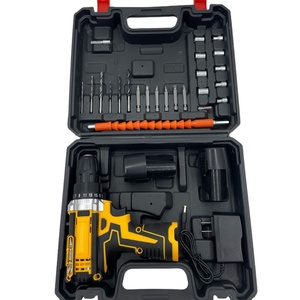

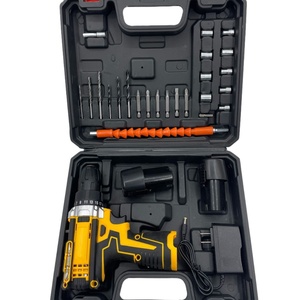






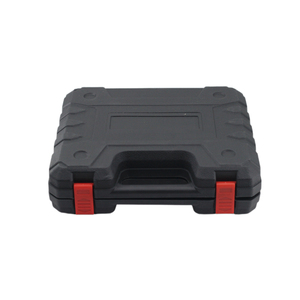



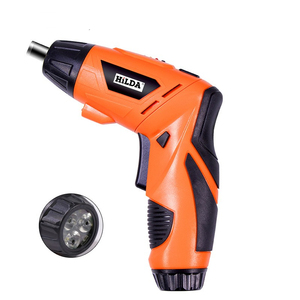


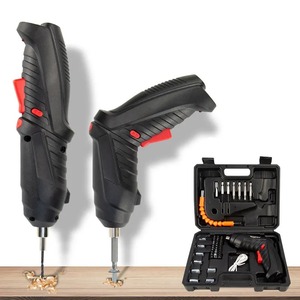
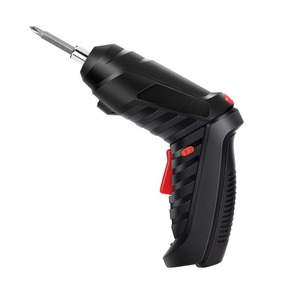


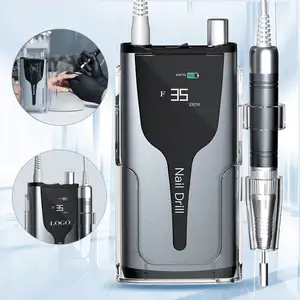






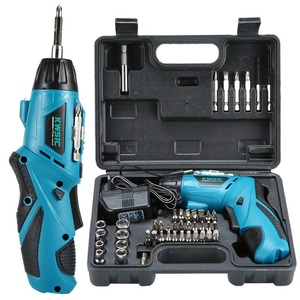






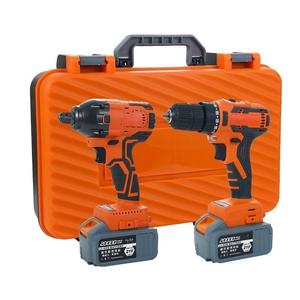

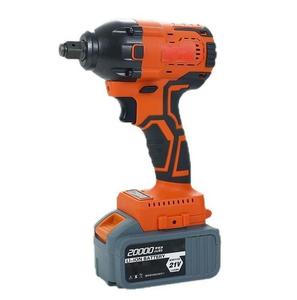


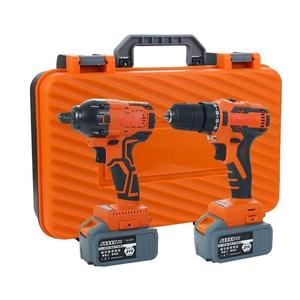






An electric dual drill has several types, each suited to particular tasks in a specific area, such as construction, manufacturing, and maintenance. Each variety is distinguished by power source, operation mode, and the drilling mechanism employed. Understanding the different kinds can help businesses choose the right tools depending on their industry needs.
The corded dual electric drill provides continuous power as it is plugged into an electrical outlet. It is perfect for long-lasting, heavy-duty tasks that require more torque and higher RPMs without worrying about battery life. Corded drills are mainly used in manufacturing, construction, and other industrial applications where the demand is constant. These are often used for more complex jobs such as drilling metal or hardwood. The constant power supply ensures efficiency and consistency during longer working hours.
With the advancement of lithium-ion battery technology, battery-operated dual drills have become more popular. These cordless models offer portability and flexibility, with no need for an electrical outlet. This makes them ideal for industries like construction, automotive repair, or furniture assembly, where work often needs to be done in different locations. While they used to have lower run times, modern battery-operated drills now have extended run times and power comparable to corded models. This allows for greater convenience without sacrificing performance.
Pneumatic dual drills are powered by compressed air rather than electricity. These are generally more durable under extreme conditions and are explosion-prone areas where electrical sparks may pose a risk. They are commonly used in the oil and gas industry, mining, and any business operating in hazardous environments. While they often have lower RPM than electric models, their strength and ability to work in conditions unsuitable for electrical devices make them necessary for particular industrial applications.
The right-angle dual electric drill is designed, as the name says, to shape its head at a 90-degree angle from the handle. This is especially convenient for drilling into narrow spaces or corners where a standard drill cannot fit. These drills are most often used in electrical work, plumbing, and any building renovation or installation. Their compact size solves the problem where larger drilling equipment would be cumbersome or, worse, ineffective.
Electric dual drills are crucial for any precision drilling tools in industrial applications where efficiency and accuracy are key. Since they combine power and functionality in one compact system, businesses use them across various fields.
In manufacturing, electric dual drills often function in mass production lines where many holes need to be drilled in materials such as metal, plastic, or wood. For this application, corded models that offer continuous drilling without interruptions work ideally. These drills ensure consistently high productivity without the downside of long overheating or wear times. They are used mainly in producing automobile parts, machinery, and electronic components.
The construction industry relies heavily on electric dual drills for all their drilling needs, from making holes in walls and structural beams to installing plumbing or electrical systems. Construction companies prefer battery-operated drills, offering portability and power to work on-site without needing a power socket. Furthermore, going cordless means the job can be done more quickly and efficiently. This is especially true for jobs that require drilling into concrete or masonry, as some battery packs are equipped with hammer-drill action to help with these tough materials.
In the oil and gas industry, pneumatic dual drills are the preferred option due to their tolerance for extreme conditions, including high temperatures and pressures. These drills are essential to the drilling process as they create the holes needed for exploration and extraction. However, electric dual drills are used for more detailed work in the industry, such as installing equipment or servicing wells. For instance, they could be used to drill the casings used to line the drilled holes.
Electric dual drills are also often used in electrical, plumbing, and HVAC projects in the building services industry. For example, right-angle drills are particularly useful when making holes for wires, pipes, or other installations in tight spaces. These tools are valuable for making renovations, as they are equally at ease drilling through old materials or new ones.
The aerospace sector requires equipment with very high performance and precision. Electric dual drills are used here to make the required holes in lightweight, strong composites, metal alloys, and other materials. Because these drills must be accurate and have no tolerance for mistakes, the industry often requires high-precision, low-vibration, and high torque drills, especially for these delicate operations.
Durability is one of the most important attributes of an electric dual drill in the industry. The factors determining its life span have to be understood in order to choose one that will provide value for money in the long run.
One of the most important factors influencing drill durability is what materials the drill is constructed with. For instance, steel is employed in making the inner components of the drill to ensure strength, while other components such as the chuck and casing use composite materials or magnesium alloys that are both tough and lightweight. In addition, components that come into contact with external factors, such as bits and chucks, can contain cobalt or carbide, which will wear the least.
Electric dual drills are also designed for working in hostile environments featuring higher humidity or dust levels. Water-resistant housing and sealed internal components are especially useful in areas that could cause corrosion or electrical short-circuiting. Dust-sealed drills prevent particles from entering the internal mechanism and thereby causing wear. This is particularly important in outdoor construction, mining, and drilling oil and gas.
Electric dual drills that can survive intense heat from continuous use or from external surrounding conditions have heat-resistant components such as bearings and windings. These components do not suffer from overheating and, will therefore not become inapt from the high temperatures. Frequent overheating of a machine causes damage to the motor and results in huge loss of time in industrial applications. Choosing a drill that can withstand heat will help reduce this risk.
The durability of electric dual drills is also affected by how easy it is to maintain them. Frequent maintenance drills, like lubrication of internal parts or regular inspection and replacement of worn-out parts, are on the more durable end. There are drills, particularly in some industries, where short intervals of maintenance are possible. There are also very few that come with self-lubricating parts that do away with the concern for lubrication. These considerations are particularly valuable in those applications where the drill must be in service constantly, as in manufacturing or construction.
Finally, a drill's motor is directly connected to its overall durability. In terms of quality, there are only a few, with the more expensive ones incorporating brushless motors that tend out to last much longer than the conventional brushed motors. Brushless motors are less likely to overheat, more efficient, and less likely to cause electrical failures. This is particularly important for industries where a drill must endure constant use without downtime.
Cost, in this instance, is not a sufficient criterion for making a choice since one may have to make several simultaneous purchases. While ensuring that one does not buy substandard equipment and that all essential elements are incorporated, one must be objective about the following considerations.
The electric dual drill's required power and torque depend on the materials it will be used for and what kinds of operations, in general, it will be used for. If, for instance, the drill is meant to work for softer materials such as wood or plastic, moderate power and torque should suffice. Greater power and torque are required for more demanding tasks like drilling into metal or concrete. Motor size and drill manufacturer's specifications are measures of these two parameters.
The type of drill bits compatible with the electric dual drill is also an important consideration. Some drills use standard chuck bits, while others require proprietary bits or specialized attachments. In addition, there are drills that support variable-speed bits, which are useful for jobs that require drilling holes of different sizes. This is particularly important in industries that require versatility for various jobs to help eliminate the need to invest in more equipment.
Since the drill will be used for long periods, more durable drills are better in their design for handling and comfort. The weight of the drill, grip shape, and balance all influence operator fatigue. There are factors, like anti-vibration technology and padded grips, which reduce the drill's impact on the body. This consideration is important in industries such as construction or manufacturing, where the workforce will need to use their tools for extended periods.
Other features, such as speed settings, are big factors in electric dual drills. Variable speed allows the drill to work faster or slower, depending on the material or task. Finally, there are examples of drills that have integrated torque clutches, which enable the drill to handle different materials while avoiding damage to the bit or material underneath. Other such features may cause one drill model to edge over another, given that these extra features may be important for some particular industrial applications.
Finally, one must consider the environment in which the drill will operate. Electric dual drills used in the open, or at temperature or moisture levels, need to be much greater than the standard conditions, should, in fact, have environmental seals and be water or dust-proof. In this case, a drill almost certainly will not be suitable for this condition if it is not rated for operating in extreme conditions. There should be a consideration for noise levels as well, particularly in those environments where this would be a concern.
A. Electric dual drills are powerful tools that can perform various drilling tasks in industrial settings. They are commonly used in construction, manufacturing, and other heavy-duty applications to drill into different materials like metal, concrete, wood, and plastic. Their power depends on the size of the motor and the type of drill.
A. The choice between an electric drill and a dual drill largely depends on the application. In contrast, an electric drill has only one spindle and serves general drilling purposes. A dual drill can drive two spindles simultaneously. Therefore, it better suits specific tasks such as riveting or working with two materials simultaneously.
A. Electric drill presses are very robust and suitable for heavy industrial applications. Since they deliver much torque and variable speeds, they are ideal for working with harder materials such as metal or concrete. It is also driven by a motor, which is why it does not die out easily.
A. The key to protecting tools is cleaning and inspecting the electric dual drills after each use, followed by lubrication, proper storage and environmental control, and occasional checks to ensure electrical components are in good working order.